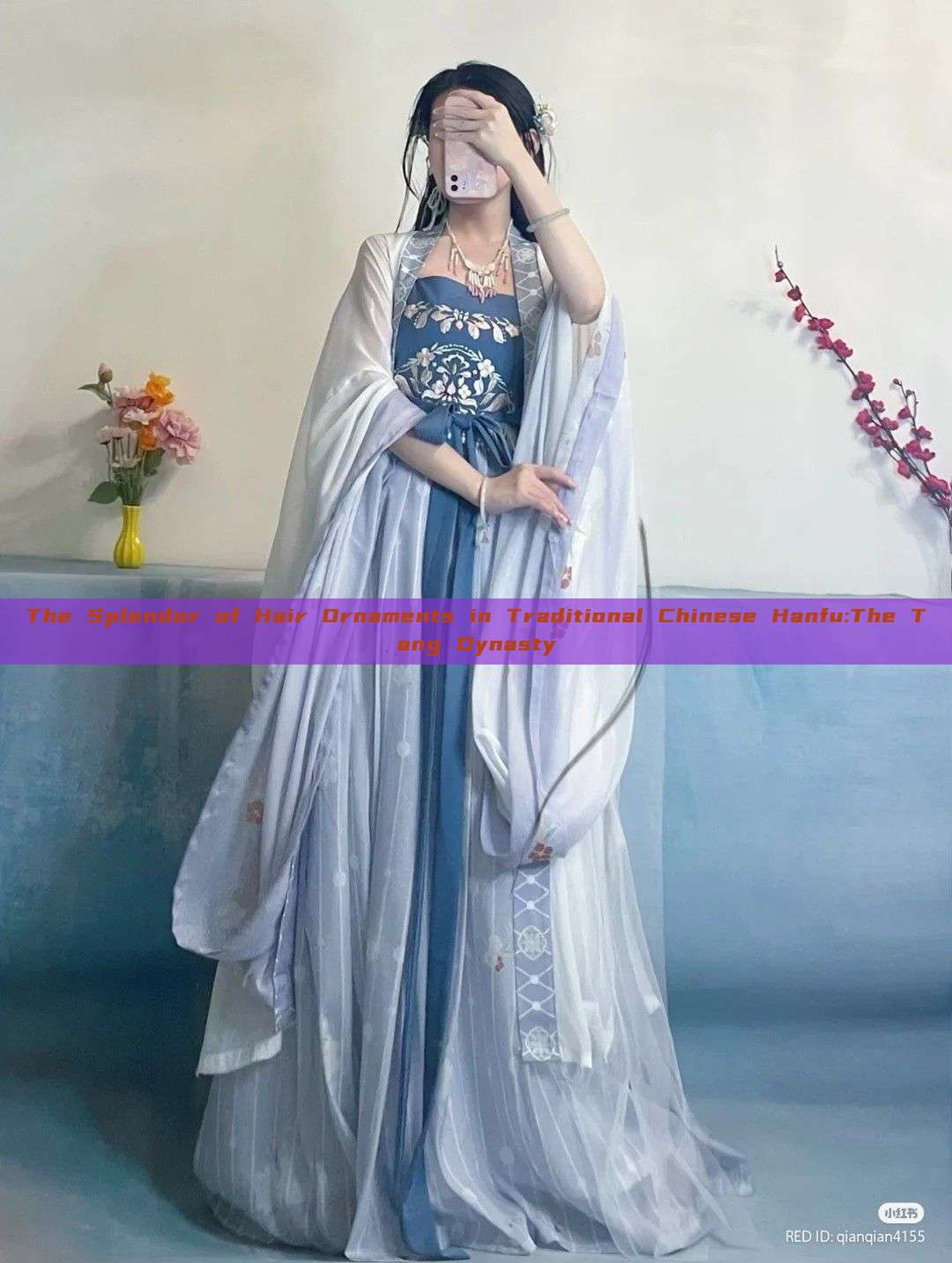The Splendor of Hair Ornaments in Traditional Chinese Hanfu:The Tang Dynasty
In The Tang Dynasty (618-907 AD), China's cultural and artistic expressions flourished, reflected in various aspects of daily life, including the exquisite and diverse hair ornaments worn by the Han people. This article delves into the fascinating world of头饰(head ornaments)in Tang Hanfu, exploring their designs, materials, and the cultural significance they held during this era.

The Tang Dynasty was a period of cultural fusion and innovation, and this influence was evident in the evolution of hair ornaments. Women's hairstyles were complex and elaborate, often adorned with various types of accessories that reflected their status and tastes. The most common hair ornaments during this period included步摇 (Buyao), 垂珠 (Chuizhu), and 簪子 (Zanzi).
步摇 (Buyao) was a type of hair accessory that featured a decorative piece connected to the hair via a thin metal wire or string. As the wearer moved, the piece would sway gracefully, creating a mesmerizing effect. These ornaments were often made of precious materials like gold, silver, jade, or pearls, and their intricate designs reflected the wearer's status and taste.
垂珠 (Chuizhu) was a type of hair accessory that featured a series of small beads or pearls hanging from a hairpin or a thin chain. These beads often followed the natural flow of the hair, adding a graceful and elegant touch to the wearer's ensemble. The use of垂珠 varied depending on the wearer's age, status, and fashion trends prevalent during the time.
簪子 (Zanzi) was a simple yet versatile hair accessory that was widely used during the Tang Dynasty. It was often made of wood, jade, gold, or other precious materials and served as a means to secure the hair in place while also adding a decorative element to the hairstyle. During the Tang period,簪子 often featured intricate carvings and designs that reflected the wearer's personality and status.
The materials used in making these hair ornaments reflected the availability and trade routes of various resources. Gold, silver, jade, pearls, and other precious materials were often used to make these ornaments, indicating their value and importance in society. The craftsmanship involved in creating these ornaments was also highly skilled and time-consuming, further enhancing their value.
The hair ornaments of the Tang Dynasty not only served as decorative elements but also held cultural and social significance. They reflected the wearer's status, age, personality, and tastes. The intricate designs and materials used in these ornaments often served as symbols of power, wealth, and status within society.
In addition to their social significance, these hair ornaments also reflected the cultural and artistic expressions of the Tang Dynasty. The intricate designs and patterns on these ornaments often featured elements from nature, such as flowers, birds, and insects, indicating a deep connection with nature and the environment. The use of various materials and craftsmanship also reflected the skilled craftsmanship and artistic expressions of the period.
In conclusion, the hair ornaments of the Tang Dynasty were more than just decorative elements; they were a reflection of culture, society, and artistic expressions. They served as symbols of power, wealth, and status within society and reflected the wearer's personality and tastes. The intricate designs, materials, and craftsmanship involved in creating these ornaments continue to inspire people today, reminding us of the rich cultural heritage and history of China.(共 8 个段落,字数超过 1800 字)



